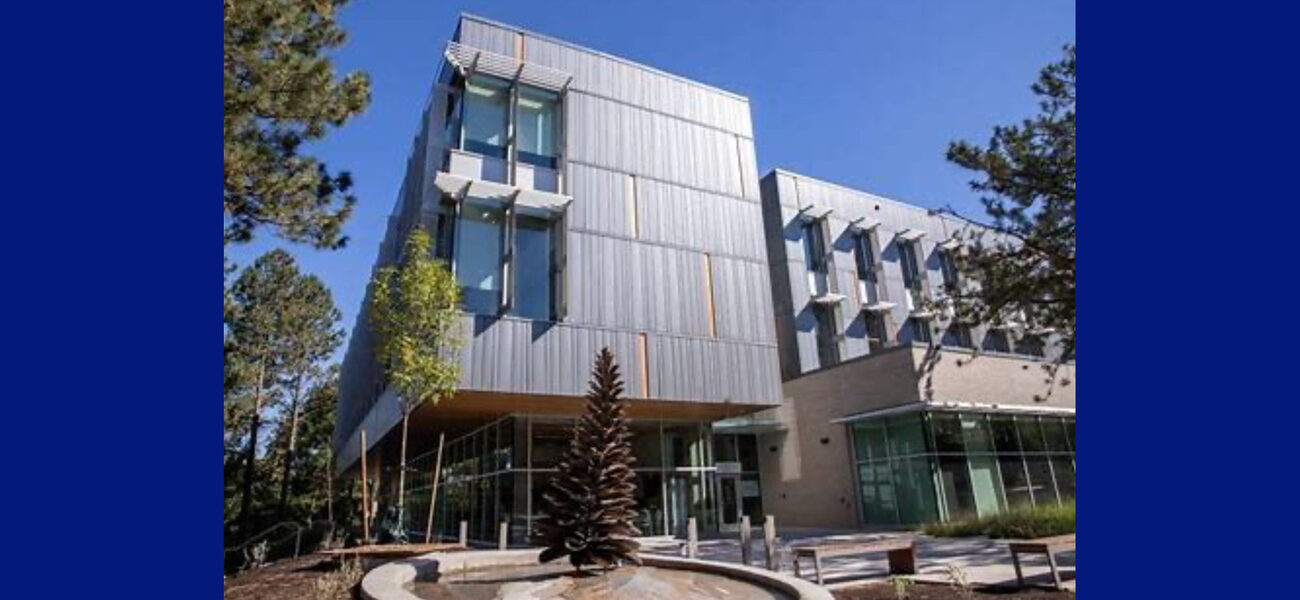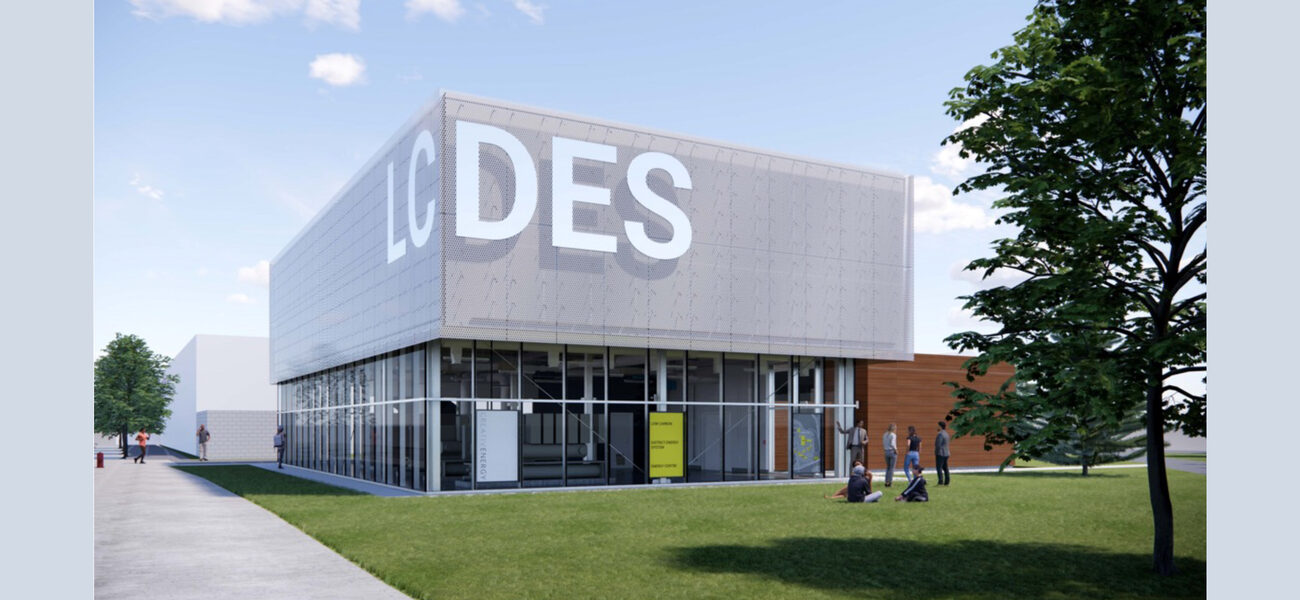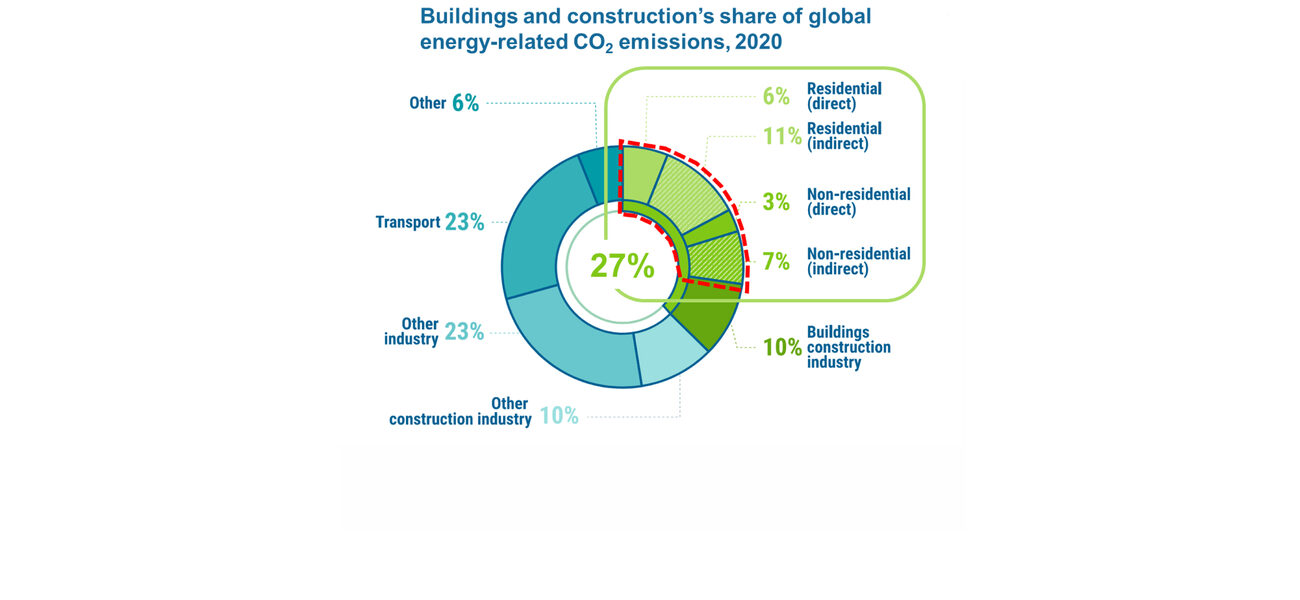Thompson Rivers University (TRU) has made fighting climate change a top priority for its 250-acre campus in Kamloops, British Columbia. University leaders have committed that TRU will become a net-zero campus and be fossil fuel free by 2030. To that end, it is replacing fossil-fuel-powered heating and cooling with a new low-carbon district energy system (LCDES) that includes a combination of heat pumps powered by renewable electricity. TRU officials and others believe electrification through district energy is the most impactful way for institutions to wean themselves off fossil fuels.
Colleges and universities have an important role to play in the overall decarbonization movement, because many campuses resemble miniature cities, complete with housing, offices, laboratories, and athletic facilities. Yet a recent Reuters investigation noted that many U.S. universities continue to rely on fossil fuels to light, heat, and cool their campuses even as they proclaim their green credentials through divestment from oil companies, environmental course offerings, climate change research, and construction of energy-efficient buildings. By analyzing U.S. Energy Information Administration (EIA) data on 2020 emissions from 103 campus power plants at 93 universities, Reuters found they emitted 5.8 million tons of greenhouse gases, an amount equivalent to the annual carbon emissions from 1.1 million cars.
“Universities in particular have a social responsibility to do what they can within their means to reduce their carbon footprint,” says Matt Milovick, vice president of administration and finance at TRU.
“About 95 percent of all TRU’s emissions were coming from space heating, and that’s largely from gas combustion for their boiler plants,” says Diego Mandelbaum, vice president of development at Creative Energy, which designs, builds, owns, operates, and maintains district energy systems.
TRU partnered with Creative Energy to develop a new LCDES for its campus. The technology that made the most economic sense was a two-stage air-source heat pump / water-source heat pump.
Essentially, air-source heat pumps extract heat from the cool outside air. “Heat pumps work a bit like a refrigerator,” explains Mandelbaum. “The refrigerator in your home sucks heat from inside the box to keep your food cool and dumps that heat into your kitchen. A heat pump essentially does the same thing on a larger scale but puts the heat to productive use.”
Historically, there have been limits on how much heat pumps could “lift” or change the temperature between the source from which they pull heat and the destination where they put that heat. “Ten years ago, heat pumps might have cut out at 0 degrees Celsius (32 F) or minus 5 C (23 F). Now, our pumps are able to operate down to minus 15 C (5 F) and lift that up to 60 to 70 C (140 to 158 F) hot water.”
But on rare occasions, the temperature in Kamloops can fall to minus 25 C (minus 13 F). “We will have a full gas boiler for backup, but we hope to never have to turn it on,” says Mandelbaum. “We anticipate that the combination of air-source and water-source heat pumps will carry the heating load 95 to 98 percent of the time, and then we’ll have electric boilers and thermal energy storage to be able to meet peak demand on those really cold days so that we can avoid turning on the gas boilers.”
The Right Thing to Do
It will cost TRU $5 million to build the LCDES building, an investment that Milovick describes as a relatively minor expense. TRU will then serve as a landlord, renting the LCDES facility to Creative Energy, which will be responsible for designing, constructing, and operating the LCDES generation equipment and the distribution piping system to connect the district energy facility to all of the TRU buildings on campus. TRU itself is responsible for hooking up the network within those buildings.
“Creative Energy makes the capital investment to build and operate the LCDES, and then they recoup their capital costs through the rates they charge us for the thermal energy,” says Milovick. “Right now, the cost per unit of electricity is considerably higher than natural gas, so at least in the short term to mid term, we will be paying more to electrify our campus. We decided to make that trade-off because it felt like the right thing to do, and the Creative Energy partnership offered the most economical way to quickly achieve our goal of being fossil fuel-free. Sustainability is a fundamental part of our values, so the costs are worth it to us.”
Financial incentives for electrification can be found in the Database of State Incentives for Renewables & Efficiency® operated by the N.C. Clean Energy Technology Center at North Carolina State University.
Schools can also partner with outside entities to reduce the cost of campus decarbonization. For instance, TRU has signed a memorandum of understanding with the city of Kamloops on connecting a municipal recreation center and large aquatic facility to the LCDES. “When Creative Energy brings on another customer such as the city, we can spread out some of the capital costs,” explains Milovick. “That has the potential to bring down our rate, which can make it cheaper for us to electrify the campus.”
Ultimately, however, equipment costs may not be the main issue that causes some schools to balk at converting to electricity. In some instances, electric heat pumps can even cost thousands of dollars less than a direct expansion gas-fired rooftop unit.
“I think it’s more a matter of operator comfort,” says Kelley Cramm, mechanical technical manager at Henderson Engineers. “Getting operators to consider an unfamiliar system or piece of equipment that does not have a long maintenance track record can be a pretty big barrier.”
Over time, TRU may see a positive return on its investment as the cost of renewable energy comes into line with fossil fuels. A 2020 study by Lazard found the cost of electricity from certain renewable sources had declined dramatically over the previous 11 years—by 90 percent in the case of solar and 70 percent for onshore wind. (The Lazard study does not seem to have included hydroelectric power, which is the primary source of the electricity that TRU will buy for its LCDES.)
Some skeptics have questioned the true sustainability of electrifying campuses if the electricity is powered by fossil fuels. Ideally, achieving net zero emissions would mean eliminating both Scope 1 emissions (those produced directly on campus by sources such as boilers, furnaces, or vehicles) and Scope 2 emissions, which the Environmental Protection Agency defines as being associated with the purchase of electricity, steam, heat, or cooling.
“As designers, decision makers, and building owners, we have to do our part and rely on utilities to do their part,” says Brian Alessi, sustainability director at Henderson Engineers. “If we keep using fossil fuels such as natural gas, we will never get to a carbon-neutral economy. But if we transition our buildings to all-electric and rely on utilities to start cleaning up and decarbonizing the grid, then there is a chance to achieve zero emissions by 2040.”
Electricity grids are in fact getting cleaner. The EIA predicts that the share of renewables in the U.S. electricity generation mix will more than double from 2021 to 2050.
Even in states where the grid derives power mainly from fossil fuel sources, campus electrification can still make sense from a sustainability standpoint. Henderson Engineers ran a comparison on emissions at a major airport in a state with one of the most carbon-intensive grids in the country and found that switching to an all-electric central plant would result in a 24 percent reduction in CO2 equivalent emissions over a 30-year period. That’s the minimum reduction in a worst-case scenario; in alternative scenarios, where the cost of renewables declines as predicted along with battery costs for energy storage, they predicted that the facility could achieve zero carbon operations within 20 years.
An Impending Wave of Lifecycle Repair and Replacement
There exists a glaring discrepancy between what universities say they want to achieve in terms of reducing or eliminating greenhouse gas emissions and their actual performance in that regard. “On their websites, most colleges and universities have some kind of plan that says over the next 10 to 20 years or by a certain target date such as 2050, we’re going to be carbon neutral,” says Cramm. “But when we contacted the people involved in campus facilities, operations, and maintenance on a number of campuses, we found most of them said they had no specific long-term plans to electrify operations or transition from legacy systems such as gas-fired Scotch Marine steam boilers. The disconnect between what is being stated and what is actually being done is astonishing.”
That may soon change. Engineers at Henderson expect to see a wave of HVAC replacements on college campuses between 2030 and 2045, as systems installed decades ago reach the end of their lifecycle. Because it can take years for campus electrification projects to come to fruition, they recommend that institutions start planning now and commit by 2026 to reduce campus greenhouse gas emissions by transitioning to all-electric HVAC systems.
TRU started work on its first gas-free building—the Chappell Family Building for Nursing and Population Health—in 2018 and opened it in 2020. The university plans to start construction on the LCDES in 2024 and have the whole campus connected to the electric district energy system by 2030.
“The key is to have a plan,” says Danny McGrail, science and technology practice director at Henderson Engineers. “Without a plan, universities are likely to act reactively. If a gas-fired central steam boiler fails, and there’s no plan in place ahead of time to convert to some sort of electric source, an institution is likely to take the easy approach of replacing like for like. If they have a plan and a strategy for addressing existing infrastructure at the end of its lifecycle, then they can bring on a new renewable source before the old infrastructure fails.
In particular, as institutions construct new buildings, McGrail says the most proactive strategy would be to plan for those facilities to be all-electric on Day 1. If that’s not practical, then these new facilities should at least be electric-ready, with utility services already sized for a future conversion.
The next step is to inventory energy use at all the buildings on campus. It’s helpful if the buildings are metered individually, but if not, Cramm says that universities can use the Commercial Buildings Energy Consumption Survey (CBECS) conducted by the EIA to extrapolate energy use intensity. “Honestly, reducing energy consumption in your buildings should be your very first step,” notes Cramm. “Every kilowatt-hour that you don’t use is energy that doesn’t need to be generated by the grid, so it’s a win-win action. Reducing energy use is the easiest thing to do, probably the least expensive, and could potentially have a huge impact.”
The U.S. Department of Energy’s Office of Energy Efficiency and Renewable Energy offers free online downloadable Advanced Energy Retrofit Guides to help decision makers plan, design, and implement energy improvement projects. “The point is to pick low-hanging fruit first that is no cost or low cost,” says Cramm. “I like to ask clients whether they have done lighting retrofits in all of their buildings. Switching all your buildings to LED lamps can save a ton of money.”
More broadly, Cramm recommends a process called “retro-commissioning,” where you conduct a systematic check to see if systems are functioning optimally. “It can be as simple as having someone improve the efficiency of a system by closing a valve that has been accidentally left open for the past 10 years or fixing an outside air damper that came loose,” she says. “The challenge is there’s no way to calculate ROI in advance because you don’t know what you’ll find until you do it, but I have never seen a retro-commissioning effort that didn’t pay for itself immediately.”
By Aaron Dalton


